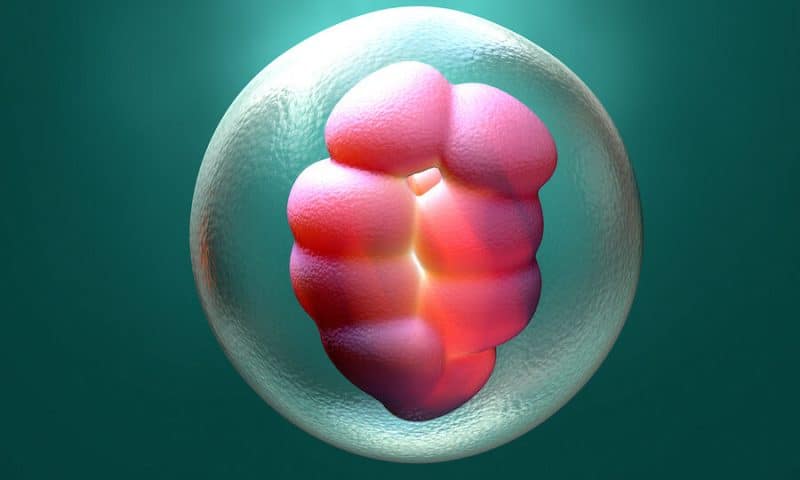
Scientists from Conceivable Life Sciences, a biotechnology company, said that the first baby conceived using its fully automated, digitally controlled intracytoplasmic sperm injection (ICSI) system has been born. Full details are available in a new paper in Reproductive Biomedicine Online titled, “A digitally controlled, remotely operated ICSI system: case report of the first live birth.”
Conceivable combines AI and robotics to automate more than 200 steps required to create embryos for IVF. Its workstation automates each of the 23 steps of the standard ICSI procedure. The ICSI system was developed and adopted into widespread use in the 1990s and is now routinely used for assisted conception. It achieves fertilization by injecting a single sperm cell into the center of a mature egg. Historically, ICSI procedures are performed manually by skilled embryologists operating microinjection systems, which can introduce variability in the fertilization process.
Besides standardizing ICSI procedures, Jacques Cohen, PhD, Conceivable’s CSO and a trained embryologist, noted that Conceivable’s automated approach also has the potential to improve egg survival and to optimize the timing of the injection. The steps can be controlled either by using artificial intelligence or a remote operator. In this latest iteration of the system, the scientists used AI to position the sperm cell in the injection pipette and direct the microinjection itself within the egg. Essentially, the system’s AI “autonomously selects sperm and precisely immobilizes its midsection with a laser ready for injection,” explained Gerardo Mendizabal-Ruiz, PhD, the company’s lead engineer.
The birth reported in the paper was accomplished in a 40-year-old female who was referred for treatment with donor eggs at Hope IVF Mexico in Guadalajara, Mexico. The patient was referred following a previously unsuccessful IVF attempt which had produced only one mature egg and no embryos. In the study cycle, five eggs were assigned to fertilization with automated ICSI, and three as controls with standard manual ICSI. The automated system was set up on site but after that remote operators, in the Guadalajara clinic and in New York, issued commands via a digital interface to perform each of the 23 microinjection steps for each egg—a total of 115 steps. Overall, the entire procedure took an average of 9 minutes 56 seconds per egg, a little longer than routine manual ICSI because of its experimental nature, but in the future, the team expects “to reduce procedure time significantly,” said Mendizabal-Ruiz.
Four of the five injected eggs in the automated system achieved normal fertilization and all three in the manual control group. One high-quality embryo that progressed to the blastocyst stage in culture had been fertilized with the automated system under remote control in New York. When this blastocyst was transferred in a subsequent cycle, a pregnancy was established which continued normally to the delivery of a healthy male baby. The treatment was provided under review board oversight at Hope IVF, a fertility clinic in Guadalajara, Mexico, as part of a pilot investigation into various processes of automation in the fertility laboratory.
Successfully achieving a live birth using the automated ICSI procedure is a significant step toward the adoption of a fully automated IVF laboratory, Alejandro Chavez-Badiola, MD, Conceivable’s co-founder and chief product officer, noted. However, applying the system more broadly will depend on its safe performance in more cases, he said.
Earlier this year, Conceivable raised $18 million in a Series A financing round led by ARTIS Ventures with participation from several new investors including Atlantic Health Venture Studio, Muse Capital, and Scrub Capital. Existing investors include ACME Capital, Black Opal Ventures, Cadence Healthcare Ventures, Future Positive Capital, Stride.VC, and Time BioVentures.

